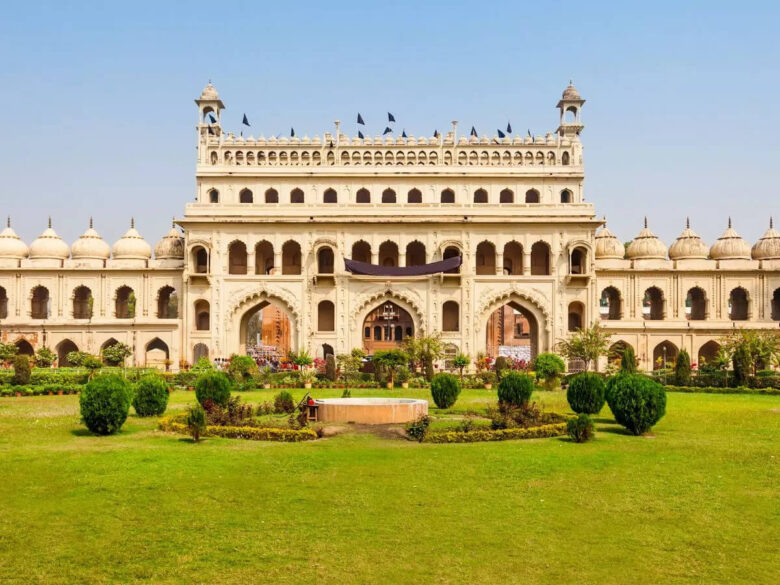Lucknow, the capital of Uttar Pradesh, is often referred to as the “City of Nawabs.” This title is a testament to the profound influence that the Nawabs of Awadh had on the city’s history, culture, and identity. The Nawabs were not only rulers but also great patrons of art, architecture, music, dance, and cuisine, shaping Lucknow into a vibrant cultural hub that continues to captivate visitors today. The legacy of the Nawabs of Lucknow is a rich tapestry of tradition, elegance, and refinement that has left an indelible mark on the city. Here’s a look at how the Nawabs of Lucknow contributed to this rich cultural legacy.
1. A Brief History of the Nawabs of Awadh
The Nawabs of Awadh, also known as the Nawabs of Oudh, were originally governors under the Mughal Empire, but they gradually became independent rulers as the Mughal power declined. The first Nawab, Saadat Khan Burhan-ul-Mulk, was appointed in 1722, and his successors continued to rule the region until the British annexation of Awadh in 1856.
- Key Figures:
- Saadat Khan (1722-1739): The founder of the Nawabi dynasty, Saadat Khan, established Awadh as a significant political and cultural center.
- Nawab Asaf-ud-Daula (1775-1797): One of the most prominent Nawabs, Asaf-ud-Daula, is credited with transforming Lucknow into a city of architectural grandeur and cultural richness. He commissioned several iconic structures, including the Bara Imambara.
- Nawab Wajid Ali Shah (1847-1856): The last Nawab of Awadh, Wajid Ali Shah, was a patron of the arts and is remembered for his contributions to music, dance, and literature.
2. Architectural Marvels: A Legacy of Grandeur
The Nawabs of Lucknow were great patrons of architecture, and their reign saw the construction of some of the city’s most iconic landmarks. These structures not only reflect the grandeur of Nawabi rule but also showcase the unique blend of Mughal, Persian, and Indo-Islamic architectural styles.
- Bara Imambara: Commissioned by Nawab Asaf-ud-Daula in 1784, the Bara Imambara is one of Lucknow’s most famous landmarks. The structure is renowned for its massive central hall, which is one of the largest arched spaces in the world without supporting beams or pillars. The complex also includes the Bhool Bhulaiya, a labyrinth of passageways, and the Shahi Baoli, a stepwell.
- Chota Imambara: Built by Nawab Muhammad Ali Shah in 1838, the Chota Imambara serves as a mausoleum for the Nawab and his family. The structure is known for its exquisite chandeliers, mirrors, and intricate calligraphy, earning it the nickname “Palace of Lights.”
- Rumi Darwaza: Another architectural marvel commissioned by Nawab Asaf-ud-Daula, the Rumi Darwaza is a grand gateway that stands 60 feet tall. Modeled after the Sublime Porte in Istanbul, it is a prime example of Awadhi architecture and a symbol of Lucknow’s grandeur.
- La Martinière College: Founded by Major General Claude Martin, La Martinière College is an architectural masterpiece that blends European and Mughal styles. Though not commissioned by a Nawab, the college’s grandeur and historical significance tie it closely to the cultural legacy of Nawabi Lucknow.
3. Patronage of the Arts: Music, Dance, and Literature
The Nawabs of Lucknow were avid patrons of the arts, fostering a cultural renaissance that had a lasting impact on Indian music, dance, and literature.
- Kathak Dance: The Nawabs were instrumental in the development of the Lucknow Gharana of Kathak, one of the major schools of this classical Indian dance form. The Lucknow Gharana is known for its emphasis on grace, expression, and intricate footwork. Under the patronage of Nawabs like Wajid Ali Shah, Kathak flourished in Lucknow, blending Hindu and Muslim cultural elements.
- Classical Music: The Nawabs of Lucknow were also patrons of classical music, particularly the Hindustani classical tradition. Nawab Wajid Ali Shah himself was a skilled musician and composer, contributing significantly to the development of thumri, a genre of semi-classical vocal music that is characterized by its romantic and devotional themes.
- Urdu Poetry and Literature: Lucknow became a major center for Urdu poetry and literature during the reign of the Nawabs. The city was home to some of the greatest poets of the time, including Mir Taqi Mir and Mirza Ghalib. The Nawabs’ patronage of mushairas (poetry gatherings) and their own contributions as poets and writers helped establish Lucknow as a literary hub.
4. Culinary Heritage: The Flavors of Nawabi Cuisine
The Nawabs of Lucknow left an indelible mark on the city’s culinary traditions, developing a cuisine that is renowned for its richness, complexity, and refinement.
- Awadhi Cuisine: Awadhi cuisine, which evolved under the patronage of the Nawabs, is characterized by its use of rich gravies, slow-cooked meats, and aromatic spices. Some of the signature dishes of this cuisine include:
- Galouti Kebabs: Legend has it that these melt-in-the-mouth kebabs were created for Nawab Asaf-ud-Daula, who had lost his teeth but still craved the taste of meat. Made with finely minced meat and a blend of spices, Galouti Kebabs are a testament to the culinary ingenuity of the Nawabs.
- Lucknowi Biryani: This delicately spiced rice dish, layered with marinated meat and cooked using the dum (slow-cooking) method, is a hallmark of Awadhi cuisine. The Nawabs’ love for fine dining is reflected in the meticulous preparation of this dish, which remains a favorite in Lucknow.
- Sheermal: A sweet saffron-flavored flatbread, Sheermal was often served at Nawabi feasts and continues to be a popular accompaniment to Lucknow’s rich curries and kebabs.
- Dastarkhwan: The concept of the Dastarkhwan, a lavish spread of food laid out on a cloth on the floor, was popularized by the Nawabs. It was not just a meal but an elaborate ritual, showcasing the Nawabs’ hospitality and love for fine dining. The Dastarkhwan remains an integral part of Lucknow’s culinary culture.
5. Cultural Etiquette and Tehzeeb
The Nawabs of Lucknow were known for their refined manners and sophisticated lifestyle, which gave rise to the city’s unique cultural etiquette known as Tehzeeb. This code of conduct emphasized respect, politeness, and hospitality, becoming a defining characteristic of Lucknowi culture.
- Language and Politeness: The Nawabs placed great importance on the use of polite language and courteous behavior. The tradition of addressing others with honorifics like “Aap” (you) instead of “Tum” (you) and the use of phrases like “Pehle Aap” (you first) are remnants of this Nawabi culture.
- Mehman Nawazi (Hospitality): The Nawabs were known for their generous hospitality, a tradition that continues in Lucknow to this day. Guests were treated with great respect and offered the best food and accommodations, reflecting the Nawabs’ belief in Mehman Nawazi as a fundamental aspect of their culture.
6. The Decline of the Nawabi Era
The cultural legacy of the Nawabs of Lucknow faced a significant setback with the British annexation of Awadh in 1856. The deposition of Nawab Wajid Ali Shah and the subsequent events of the Indian Rebellion of 1857 marked the end of the Nawabi era.
- British Annexation: The British East India Company annexed Awadh on the pretext of misgovernance, sending Nawab Wajid Ali Shah into exile in Calcutta. This event marked the end of Nawabi rule and the beginning of British colonial dominance in the region.
- The Mutiny of 1857: The Residency in Lucknow became a focal point during the Indian Rebellion of 1857, with the siege of the British forces becoming a symbol of resistance against colonial rule. The aftermath of the rebellion saw further erosion of Nawabi influence in the region.
Conclusion
The Nawabs of Lucknow left behind a rich cultural legacy that continues to define the city’s identity. From the grandeur of its architecture to the sophistication of its arts, music, dance, and cuisine, the influence of the Nawabs is evident in every aspect of Lucknow’s cultural fabric. Though the Nawabi era ended more than a century ago, the traditions, values, and aesthetic sensibilities they nurtured have endured, making Lucknow a living museum of its royal past. As you explore the city’s historic monuments, savor its culinary delights, or witness a Kathak performance, you are experiencing the lasting legacy of the Nawabs—a legacy that continues to enchant and inspire.


